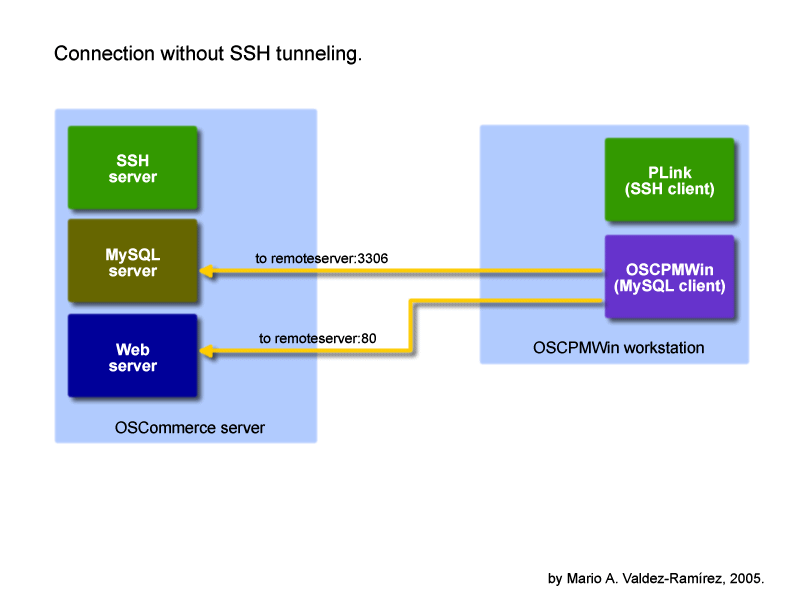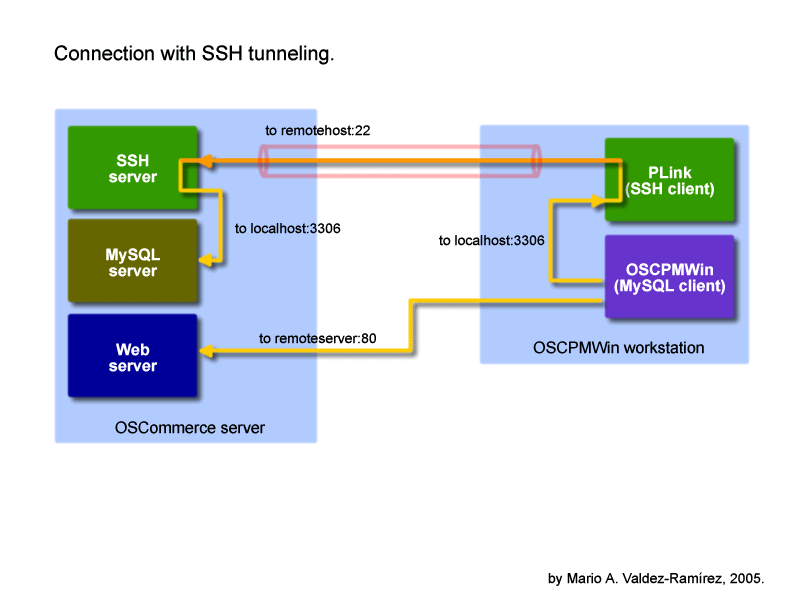Tai:
> Just to make it clear...I am connecting
> to a completely remote computer. This
> test fails on my local computer. Testing
> this on the remote computer works. Am
> I supposed to open this port up locally?
> I would think if SSH works int he test mode
> then it should work. Perhaps I am misunderstaning
> something simple here.
> I have tested Cause 2 while in the Test
> Tunnel and that works great. I can use
> SSH to get into my box - I own my own
> server and I have ensured that the DB
> user is allowed access from %, 127.0.0.1,
> and localhost.
Hi again. Yes, I assumed you were trying to connect to a remote server. The connection to localhost is to connect to the "entrance" of the SSH tunnel. I made two figures to depict this:
Connection without SSH tunneling:

Connection with SSH tunneling:

As you can see, the OSCPMWin application (or any client in the workstation) should connect to localhost so the SSH client can "forward" the traffic (encrypted) to the remote host, where the SSH server will decrypt the traffic and pass it to a localhost connection.
You tested this in the remote server, it worked, meaning that the Cause 1 is discarded. But you said it failed in your workstation. If the SSH tunnel was active (because you used the "TEST TUNNEL" option or invoked PLink manually) while trying to connect with Telnet to "localhost 3306", then there is something wrong.
Check the firewall stuff. And check the settings in the OSCPMWin application. Check that both the "DB Port" and the "SSH local port" are set to 3306.
> I am willing to provide access information
> to my site for a test user. We do a lot of
> community development with oscommerce
> and would like to be able to utilize this
> program.
First try to find the cause yourself. If you still have problems, let me know and I will do a test with your test user. (Just send me the parameters by email to
mario@mariovaldez.org and be sure to delete the user afterward; just for security).
> We were thinking of putting one
> together in .Net, but can't figure out how
> to transmit everything securely.

Ah, that's interesting. Would you like to tell us more? I curious...
Regards,
Mario A. Valdez-Ramirez.



